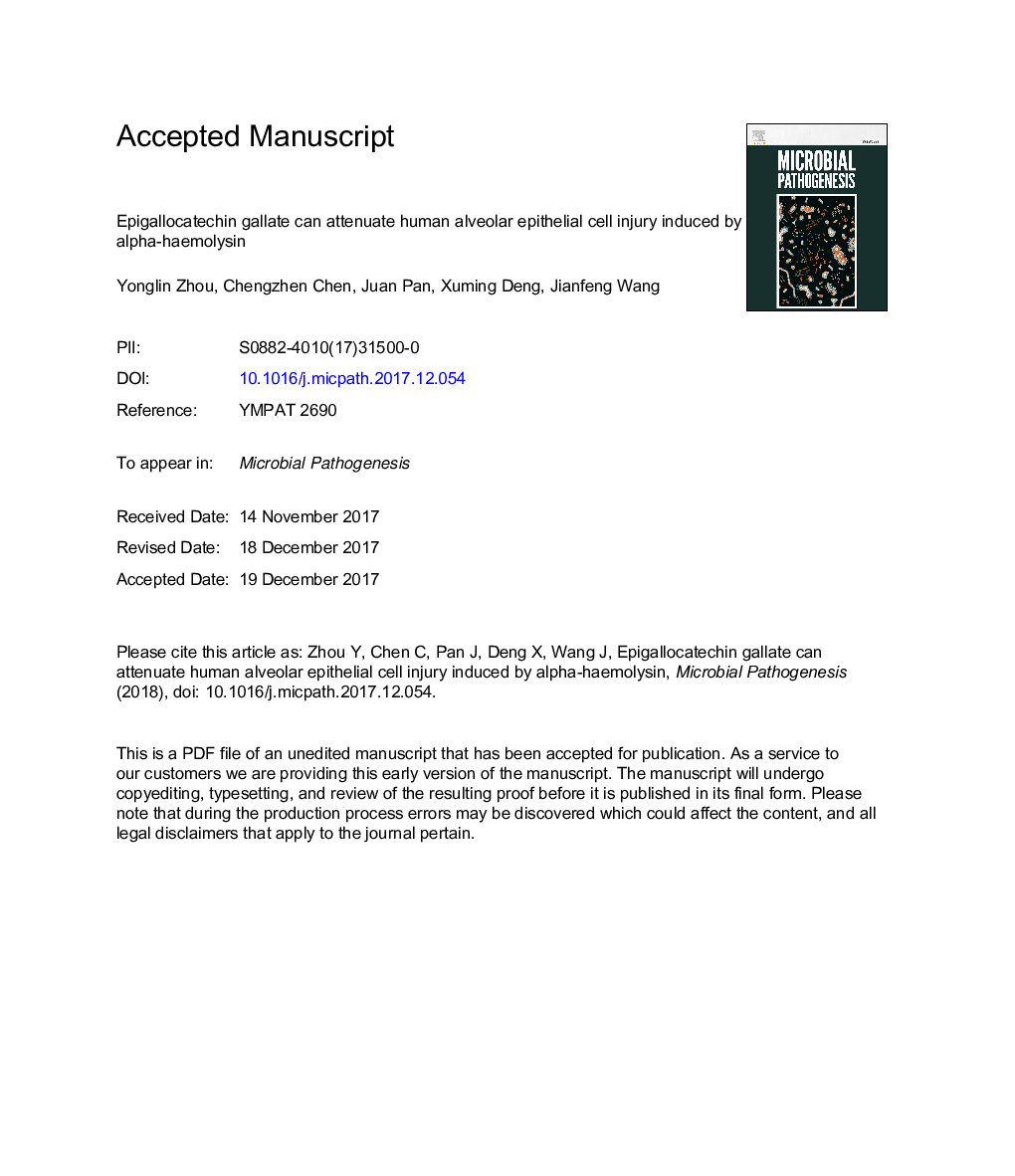| Article ID | Journal | Published Year | Pages | File Type |
|---|---|---|---|---|
| 8749807 | Microbial Pathogenesis | 2018 | 25 Pages |
Abstract
Staphylococcus aureus (S. aureus) is a common cause of hospital-acquired infection and has become an epidemic globally. Alpha-haemolysin (α-haemolysin), a pore-forming toxin, is one of the most important virulence factors secreted by most S. aureus strains. α-haemolysin monomers form a 232.4-kDa membrane-inserted heptamer by self-assembling to cause host cell lysis and death. Consequently, α-haemolysin plays a significant role in the pathogenesis of S. aureus, and it could be the target for the treatment of staphylococcal infection. In this study, epigallocatechin gallate (EGCg), a natural compound with little anti-S. aureus activity, was shown to reduce the haemolytic activity of α-haemolysin by inhibiting the self-assembly of the heptamer. When EGCg was added into a co-cultured system of human alveolar epithelial (A549) cells and bacterial suspension, α-haemolysin-induced cell injury was significantly attenuated. These results indicate that EGCg could effectively reduce the cytotoxicity of the toxin by interacting with α-haemolysin. This study provides the basis for the development of anti-virulence drugs for the treatment of S. aureus infection.
Related Topics
Life Sciences
Immunology and Microbiology
Microbiology
Authors
Yonglin Zhou, Chengzhen Chen, Juan Pan, Xuming Deng, Jianfeng Wang,
